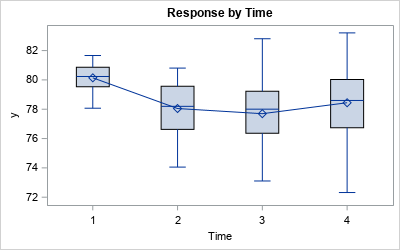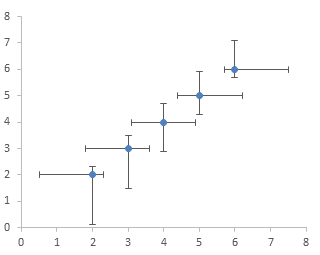

- #GRAPH SHOWING MEAN AND STANDARD DEVIATION EXCEL HOW TO#
- #GRAPH SHOWING MEAN AND STANDARD DEVIATION EXCEL MANUAL#
The screen below shows how to manually calculate standard deviation in Excel.Ĭolumn D calculates Deviation, which the value minus mean.
#GRAPH SHOWING MEAN AND STANDARD DEVIATION EXCEL MANUAL#
Manual calculations for standard deviation In these cases, Bessel’s correction may not be useful. On the other hand, a large enough sample size will approach the statistics produced for a population. Remember that a small sample is not likely to be a good approximation of a population in most cases. If you have sample data, and only want standard deviation for the sample, without extrapolating for the entire population, use the STDEV.P function.If you have an appropriately large sample and you want to approximate standard deviation for the entire population, use the STDEV.S function.If you have data for an entire population, use STDEV.P.When should you use STDEV.S, which includes Bessel’s correction? It depends. The STDEV.S function uses Bessel's correction.In the context of Excel and standard deviation, the key thing to know is: When working with a sample population, Bessel's correction can provide a better estimation of the standard deviation. It appears in formulas as n-1, where n is the count. When standard deviation errors bars overlap even less, its a clue that the difference is probably not statistically significant. It contains well written, well thought and well explained computer science and programming articles, quizzes and practice/competitive programming/company. You must actually perform a statistical test to draw a conclusion. However, when you calculate statistics for a sample, results are estimates and therefore not as accurate.īessel's correction is an adjustment made to correct for bias that occurs when working with sample data. When standard deviation errors bars overlap quite a bit, its a clue that the difference is not statistically significant. When you calculate statistics for an entire population (mean, variance, etc.) results are accurate because all data is available.

IF the data is just a sample, and you want to extrapolate to the entire population, you can use the STDEV.S function to correct for sample bias as explained below. Thus, the standard deviation is square root of 5.7 2.4. To get to the standard deviation, we must take the square root of that number. Remember, this number contains the squares of the deviations. Thus, the sum of the squares of the deviation from the average divided by 4 is 22.8/4 5.7. If the data represents the entire population, you can use the STDEV.P function. Thus, the correct number to divide by is n - 1 4. To calculate standard deviation in Excel, you can use one of two primary functions, depending on the data set. The screen below shows how to manually calculate standard deviation in Excel.Ĭolumn D calculates Deviation, which the value minus mean.Standard deviation is a measure of how much variance there is in a set of numbers compared to the average (mean) of the numbers.

As in step 2, y oull do this for each data point, so youll. Square each of the resulting numbers to determine (x-x) 2. Youll do this for each data point, so youll have multiple (x-x). Subtract the mean from each point of data to determine (x- x ). Remember that a small sample is not likely to be a good approximation of a population in most cases. Calculate the mean ( x) of a set of data.
/excel-standard-deviation-stdev-function-2-57bc101e5f9b58cdfdf01167.jpg)
However, when you calculate statistics for a sample, results are estimates and therefore not as accurate.īessel's correction is an adjustment made to correct for bias that occurs when working with sample data. If the data represents the entire population, you can use the STDEV.P function. Standard deviation is a measure of how much variance there is in a set of numbers compared to the average (mean) of the numbers.


 0 kommentar(er)
0 kommentar(er)
